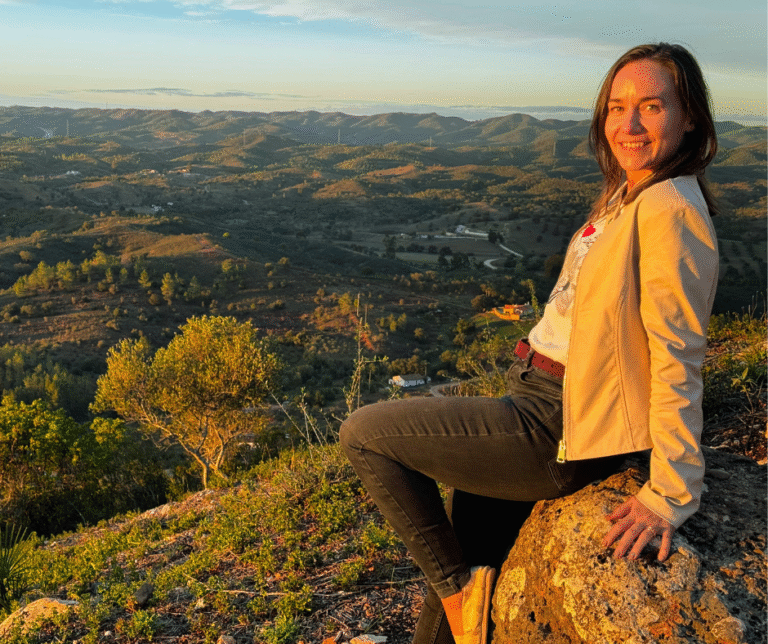
Are you feeling overwhelmed and exhausted? In this blog post, we will explore the causes and effects of burnout. Learn practical strategies to overcome burnout and cultivate a life filled with joy, purpose, and fulfilment. Join us on the path to wholehearted living.
What is Burnout?
Contrary to what many people think, burnout is not just something you can ‘get over’ with a good night’s sleep. It is a shutdown of your entire system and it requires a holistic systemic approach to recover from. Burnout occurs when your system has been dealing with chronic stress for a long period of time, resulting in mental, emotional, and physical exhaustion.
Understanding that burnout is a serious condition, not simply tiredness or temporary stress, is the first step toward meaningful recovery and prevention.
What Causes Burnout?
Because burnout is often a result of unchecked chronic stress, it can be hard to distinguish when stress has turned into burnout.
Here are some of the primary causes of chronic stress that, if left unchecked, will become burnout:
Workload
Burnout is still primarily associated with work. If you feel chronically overloaded at work, beyond a pressure that helps you complete tasks effectively, the stress will continue to build. Persistent overwork without adequate rest creates a perfect storm for burnout.
Lack of Control and Resources
Feeling like you have a lack of autonomy over decisions that affect you, as well as not having access to the resources you need, can take a huge toll on your well-being and cause significant internal stress. When you can’t influence your work environment or access what you need to succeed, helplessness sets in.
Purpose
Feeling like there is a lack of purpose or reward for your work can lead to a lack of motivation and feelings of resentment. When your daily efforts feel meaningless or undervalued, it becomes increasingly difficult to sustain your energy and enthusiasm.
Support
Do you have a community or support network to draw upon? Feeling isolated, alone, or misunderstood can amplify the effects of stress and accelerate the path to burnout. Human connection and understanding are essential buffers against chronic stress.
Values
If your values clash with your workplace, it can cause prolonged stress and potential conflicts with priorities. This can be especially problematic if it’s combined with any unfairness or injustice. Living out of alignment with your core values creates internal friction that drains your energy.
Personality Traits
Some traits such as perfectionism, pessimism, and a need for control may mean that you are more susceptible to burnout. High achievers and those who struggle to set boundaries often find themselves particularly vulnerable.
Self-Care
Not taking time for yourself, not sleeping well, and not taking care of your needs physically, mentally, and emotionally are major contributors to burnout. When self-care becomes the first thing sacrificed, burnout becomes inevitable.
What Are the Different Types of Burnout?
Understanding which type of burnout you’re experiencing can help you identify the most effective recovery strategies:
Overload Burnout
This is where you keep working harder and harder in pursuit of your final goal. You can’t stop and don’t see the risks to your own health in continuing. You sacrifice everything, relationships, health, joy, in pursuit of achievement.
Under-Challenged Burnout
This is where you don’t find your job stimulating or challenging enough and become bored, disengaged, and cynical. The monotony and lack of growth opportunities drain your motivation and sense of purpose.
Neglect Burnout
This is where you feel helpless and like you can’t do anything right. You might feel incompetent and experience ‘imposter syndrome.’ Despite your efforts, nothing seems to work, leading to feelings of inadequacy and defeat.
Habitual Burnout
This is where your mental, physical, and emotional fatigue is chronic. It’s the most serious stage where you can become depressed and detached. This is burnout that has become your baseline, a dangerous place that requires immediate attention and support.
I’m aware that this all sounds pretty serious, and there’s good reason for that.
I wish at the time of my burnout, I recognised it and how serious it was. It would have saved me so much anguish. It’s also been the part of my journey that has taken the most healing, forgiveness, and compassion.
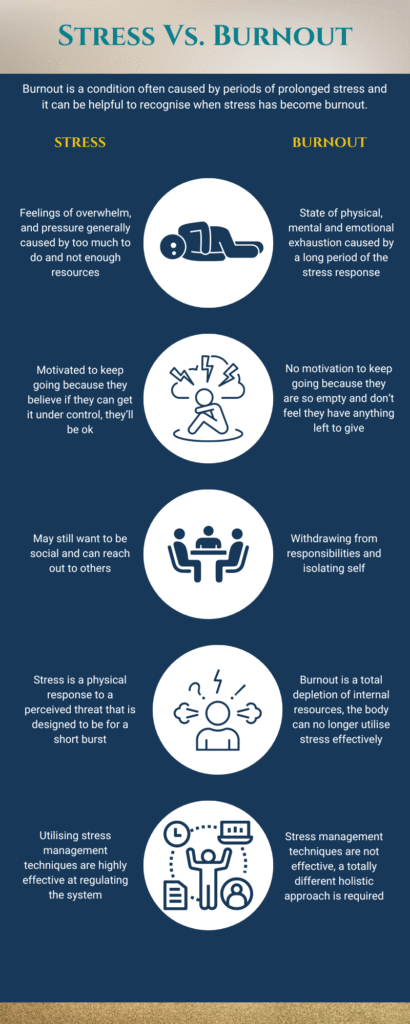
My Personal Burnout Experience
I have read about many different burnout experiences and whilst they all differ in their circumstances and effects, they tend to follow similar patterns:
Increased demands at work → increase in personal stress/pressure → inability to switch off → exhaustion/fatigue → time off work to recover.
I’ve read very little about the in-depth experience of burnout or what originally caused a person to get to that point in the first place, or what happens when it’s a repeated cycle rather than a one-off experience.
Encountering my own resistance in sharing my journey, beyond the initial overwhelm of ‘where do I begin?’, there is a deep sense of shame. And shame is so destructive because it keeps things hidden in the shadows. We don’t want to expose those parts of us that come loaded with shame and so it continues to live on, feeding on the secrecy that it loves to exist in.
Throughout my time as a business owner, I had multiple encounters with burnout. The last one was the straw that broke the camel’s back once and for all and is the one that led me on one of the greatest healing journeys I have ever experienced…
The Breaking Point
By December 2022, I had been running my own wellbeing salon for over 12 years. Starting it from scratch in an area that I had just moved to, it was the dream of ‘living life on my terms’ that I had been longing for. I loved the challenge of running my own business, as well as the creative thinking that was required. What started as me and a treatment room grew to a team of eight employees serving thousands of clients a year.
As I take a very honest look back now, there were so many warning signs that this would lead to eventual burnout for me that I just didn’t see. I am going to share as much as I can here in the hope that they help you to spot the signs in your life and help you to take the steps you need in order to prevent total burnout.
Living Life Out of Alignment with Your ‘Juice’
I truly believe that we can only press on for so long in a situation that is not aligned with who we truly are. My original plan for my wellbeing business was to become a wellbeing centre that would be a place where someone could come and access various therapies to help them work on a particular issue or concern holistically. ‘Wellbeing’ is something of a buzzword nowadays, but back in 2010, this was a relatively new concept.
It quickly, however, developed into being more beauty treatment focused and that became the backbone of the business. I was an excellent therapist and built a core team of amazing therapists which kept us as a five-star rated salon consistently.
Here’s the thing though: despite excelling at that career, it was never something I truly wanted. I tried many times over the years to step back and develop the more therapy side of things. But every single time I tried, I got pulled back. Either a member of staff left or got sick, clients refused to see anyone but me, or I encountered narcissists that caused huge trauma. EVERY. SINGLE. TIME.
It got to the stage where I thought there was some weird curse that was keeping me and the business energetically tied somehow.
I was caught in a trap between knowing I wanted something different and the business being the thing that was providing myself, my family, and my team with stability and an income, as well as being a sanctuary for so many clients.
The Pandemic’s Impact
The Covid-19 pandemic feels something of an alternative lifetime now, doesn’t it? But it hit our industry particularly hard. Being close contact, we had to close at every lockdown, and whilst the employees received furlough pay, for us as directors, there was very little support.
Witnessing so many people descend into fear and panic, I drew upon all of my therapy training and continued to help clients where possible with free anxiety support sessions, online resources, and relaxation sessions. Thanks to our amazing client relationships, we bounced back well, but there’s no denying that a huge shift had happened.
That whole period demanding even more from me was eating into a fuel tank that was already pretty depleted. I was witnessing the same thing amongst so many business owners and I sensed that many businesses would close within the next 12 months. Not necessarily just because they were no longer financially viable, just because the owners ran out of ‘juice’.
The Final Straw
During 2022, I knew I had to work on my exit plan. As per usual, it coincided with changes in the team and whilst we tried to recruit and find people who could push the business forward, it just didn’t work. This time I broke. And I knew me breaking meant I had to walk away.
This realisation was unbearably hard because even though the business wasn’t exactly in alignment with my passion, it was my baby that I had literally given everything to for over 12 years of my life.
Here’s the tough part and why we begin the WholeHearted Journey with radical honesty: choosing what you need that is truly in alignment with your dreams, desires, and passions might mean some difficult choices and decisions need to be made, especially if you have veered away from yourself for a long period of time.
The Road to Recovery: Practical Strategies to Overcome Burnout
Recovery from burnout isn’t linear, and it requires a holistic, systemic approach that addresses the root causes, not just the symptoms. Here are the essential strategies that supported my healing and can support yours:
1. Practice Radical Honesty
The first stage of the WholeHearted Technique is radical honesty- getting brutally honest with yourself about where you are, what’s not working, and what needs to change. This means:
- Acknowledging the full extent of your exhaustion
- Recognising patterns that led to burnout
- Admitting when something isn’t aligned with your true self
- Being honest about what you truly want and need
Radical honesty can be uncomfortable, but it’s the foundation for authentic healing and lasting change.
2. Understand Your Trauma Response
Burnout often triggers or is intertwined with trauma responses. Common responses include:
- People-pleasing and difficulty saying no
- Constant doing and inability to rest
- Perfectionism and fear of failure
- Numbness and disconnection from feelings
- Hypervigilance and inability to relax
Understanding how your nervous system responds to chronic stress is crucial. Working with somatic practices such as breathwork, meditation and gentle movement, can help regulate your nervous system and create safety in your body again.
3. Cultivate Self-Compassion
One of the most transformative aspects of my recovery was learning to extend compassion to myself. Burnout often comes with a heavy load of shame, self-judgment, and the belief that you “should” be able to handle more.
Self-compassion means:
- Treating yourself with the same kindness you’d offer a dear friend
- Acknowledging that suffering and struggle are part of the human experience
- Recognising that you did the best you could with the resources and awareness you had at the time
4. Set Aligned Boundaries
Burnout is often a sign that your boundaries have been repeatedly crossed or that you haven’t been honouring your own limits. Recovery requires learning to:
- Say no without guilt
- Protect your time and energy
- Communicate your needs clearly
- Walk away from situations that consistently drain you
Aligned boundaries aren’t about building walls, they’re about creating space for what truly matters to you.
5. Reconnect with Your Inner Landscape
Burnout disconnects us from ourselves. We become so focused on external demands that we lose touch with our inner world: our feelings, needs, desires, and intuition.
Recovery involves:
- Regular check-ins with yourself: “How am I really feeling?”
- Journaling to process emotions and gain clarity
- Meditation and mindfulness practices
- Spending time in nature
- Creative expression
These practices help you rebuild the relationship with yourself that burnout eroded.
6. Choose Yourself
This might be the hardest step, especially if you’re used to putting everyone else first. Choosing yourself means:
- Prioritising your wellbeing even when it feels selfish
- Making decisions based on what’s right for you, not just what others expect
- Investing in your healing and growth
- Sometimes making difficult choices that disappoint others
Choosing yourself isn’t selfish, it’s essential. You cannot pour from an empty cup, and you cannot live a wholehearted life while abandoning yourself.
7. Embrace Authenticity
Burnout often happens when we’re living inauthentically, performing a role, meeting others’ expectations, or pursuing goals that aren’t truly ours. Recovery invites you to:
- Identify what’s truly important to you
- Express yourself honestly
- Let go of masks and personas
- Show up as you really are
Authenticity is energising. When you’re living in alignment with your true self, you access a sustainable source of energy and joy.
8. Create a Future Vision
Once you’ve begun healing, it’s time to envision what you truly want. This isn’t about returning to how things were before burnout, it’s about creating something new and aligned. Ask yourself:
- What does a wholehearted life look like for me?
- What brings me joy, purpose, and fulfilment?
- What do I want to create moving forward?
- How do I want to feel in my daily life?
Your burnout, as painful as it was, can become a catalyst for profound transformation and a life that truly reflects who you are.
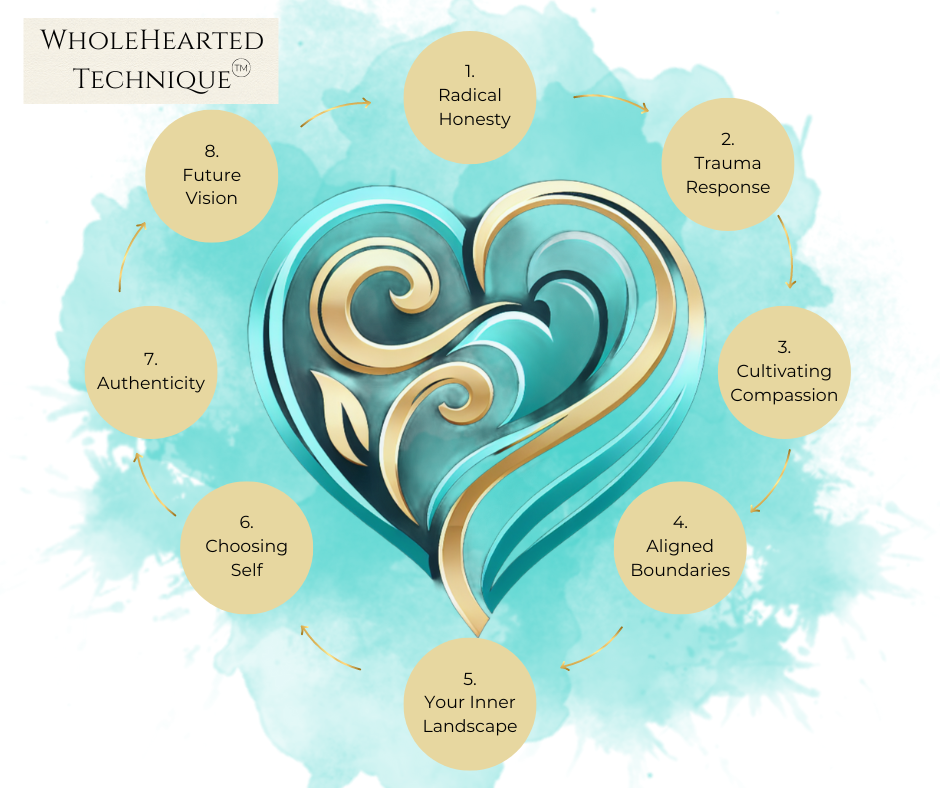
The WholeHearted Approach to Burnout Recovery
The WholeHearted Technique is an eight-stage framework designed specifically to help high-achieving visionaries, healers, creatives, and changemakers recover from burnout and reconnect with their authentic selves. It combines:
- Ancient wisdom: Shamanic and somatic practices
- Modern science: Research from Dr. Joe Dispenza and the HeartMath Institute
- Embodied practices: Breathwork, meditation, movement, drumming, ritual, and ceremony
- Personalised support: Bespoke resources tailored to your unique journey
This holistic approach addresses burnout at every level, mental, emotional, physical, and spiritual, creating lasting transformation rather than temporary relief.
Resources to Support Your Journey
Listen to the WholeHearted Living Podcast
Every Thursday, I release a new podcast episode exploring topics related to trauma, survival patterns, burnout recovery, and wholehearted living. The current season focuses on earth and wholeness, perfect for grounding yourself during recovery.
Subscribe to the WholeHearted Living Podcast to receive weekly support and inspiration on your journey.
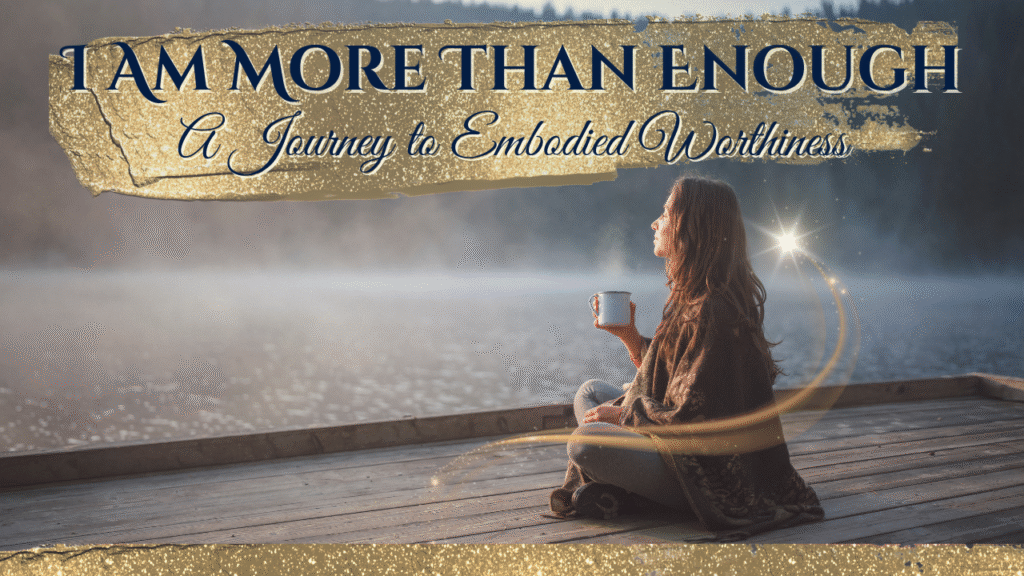
If you’re ready to begin your healing journey but want to start at your own pace, the “I Am More Than Enough” self-study course offers:
- Lifetime access to all recordings and materials
- Four transformational teaching sessions
- Teaching, somatic work, journal prompts, and audio activations
- Extra Q&A sessions
- Extra support for your questions, comments and reflections
This course is designed to help you reconnect with your inherent worthiness and begin releasing the survival patterns that led to burnout.
Ready to Go Deeper?
If you’re resonating with this journey and feeling called to go deeper, I offer bespoke coaching programs designed specifically for high achievers who are ready to transform burnout into breakthrough.
What to Expect:
- Duration: 6–12 months of personalised support
- Approach: The complete eight-stage WholeHearted Technique framework
- Resources: Handcrafted workbooks, meditations, audios, and journal prompts tailored specifically to you
- Outcomes: Clients report feeling lighter, more authentic, and experiencing increased love, connection, play, and creativity. Many discover new aligned professional opportunities and a profound sense of aliveness.
This isn’t a quick fix, it’s a deep, transformational journey back to yourself. If you’re ready to stop surviving and start thriving, book a discovery call to explore whether this work is right for you.
Final Thoughts: From Burnout to Wholehearted Living
Burnout isn’t a failure it’s a message. It’s your system saying, “Something needs to change.” And while the experience is painful, it can also be a powerful catalyst for transformation.
My burnout led me to close a business I’d built for over 12 years, but it also led me to create the WholeHearted Living Institute and develop the WholeHearted Technique. It brought me back to my true purpose and passion. It taught me about radical honesty, self-compassion, and what it means to truly choose yourself.
Your burnout can be the beginning of your most authentic, fulfilling chapter yet, but only if you’re willing to listen to its message and do the deep work of healing and realignment.
You don’t have to do this alone. Whether through the podcast, the self-study course, or personalised coaching, support is available. The path to wholehearted living is one of courage, honesty, and deep self-love, and it’s a journey worth taking.
Remember These Key Truths:
Burnout is not a character flaw.
It doesn’t mean you’re weak, incapable, or not good enough. It means you’ve been operating beyond your capacity for too long, often while ignoring your own needs and living out of alignment with your authentic self.
Recovery takes time.
Just as burnout didn’t happen overnight, healing won’t either. Be patient with yourself. Honour the pace of your nervous system. Celebrate small victories. Recovery isn’t linear, there will be good days and challenging days, and both are part of the journey.
You are more than your productivity.
In a world that measures worth by output and achievement, burnout often forces us to confront a painful question: “Who am I when I’m not doing?” The answer is profound: you are inherently worthy, simply because you exist. Your value isn’t determined by what you produce or accomplish.
Asking for help is strength, not weakness.
High achievers often struggle with this the most. We’re used to being the capable one, the strong one, the person others lean on. But true strength includes knowing when to reach out, when to be vulnerable, and when to accept support.
Your story matters.
If you’re reading this and recognising yourself in these words, know that your experience is valid. Your exhaustion is real. Your pain matters. And your healing is possible.
The Invitation
I invite you to take one small step today toward wholehearted living:
- Be radically honest with yourself about where you truly are
- Practice one act of self-compassion, speak to yourself as you would a beloved friend
- Set one boundary that honours your energy and wellbeing
- Listen to a podcast episode that resonates with where you are right now
- Journal about what your burnout might be trying to tell you
- Reach out for support, whether that’s to a friend, therapist, coach, or community
Wholehearted living isn’t about perfection. It’s not about having it all figured out or never struggling again. It’s about showing up authentically, honouring your truth, choosing yourself, and cultivating a life that feels aligned with who you really are.
It’s about moving from survival to aliveness. From exhaustion to energy. From disconnection to deep, meaningful connection, with yourself, with others, and with your purpose.
You deserve to feel alive, not just to survive.
If burnout has brought you to your knees, let it also be the ground from which you rise, stronger, wiser, more authentic, and more whole than ever before.
Connect and Continue Your Journey
Weekly Podcast: New episodes every Thursday, subscribe wherever you listen to podcasts
Self-Study Course: “I Am More Than Enough”
Bespoke Coaching: 6–12 month transformation programs for high achievers ready to move from burnout to breakthrough
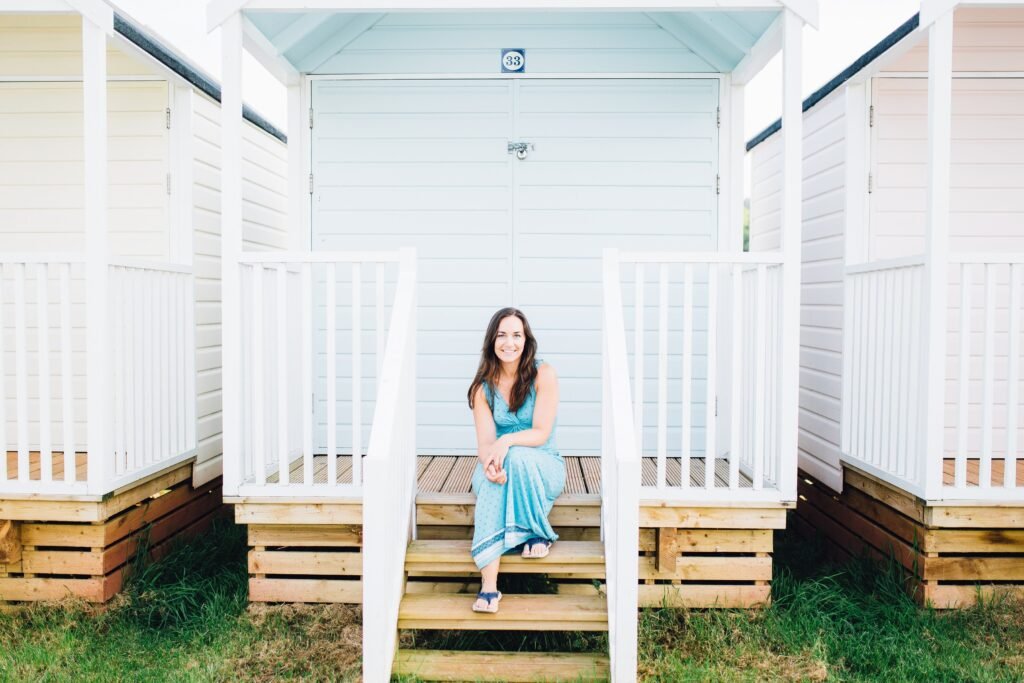
Burnout brought me to my knees, but it also brought me home to myself.
My deepest hope is that this post helps you find your way home too, to the wholehearted life that’s waiting for you.
With love and understanding,
Debs Thorpe
Founder, WholeHearted Living Institute


